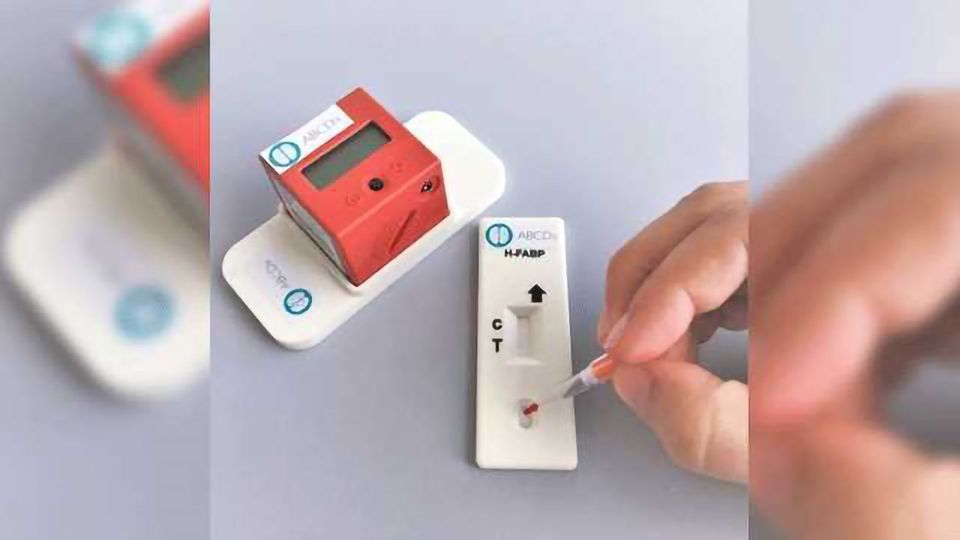Biomarkers and a 90s Party - What's the Connection?

Complete the form below to unlock access to ALL audio articles.
Every year, millions of people are admitted to hospital with suspected mild traumatic brain injury (mTBI), yet trauma is detected in only about 10% of the group.1
The rest are sent home, often after unnecessary radiation exposure during the CT (computerized tomography) scan, which determines whether patients have a trauma-induced brain lesion.
In addition, CT scans are expensive, time-consuming, and aren’t available in every hospital.
Therefore, the hunt is on for biomarkers of mTBI.
Last year, a group from the University of Geneva published a paper in PLOS ONE2 detailing the suitability of different biomarkers in blood for this purpose.
(Read the story here)
To learn more about this work and where it’s heading, we caught up with Jean-Charles Sanchez, first author of the paper and head of the Biomedical Proteomics Group at the Faculty of Medicine, Geneva University.
Last year you identified H-FABP and GFAP (in combination) as suitable markers in blood that indicate whether a patient should be referred on for a CT scan. Can you elaborate on the origin of each of these proteins, and explain how their circulating levels relate to physical and physiological changes that occur following a head knock?
These two proteins are present in the brain tissues. H-FABP is distributed in the whole brain, GFAP is present in brain cells called astrocytes.
When a brain lesion occurs, these proteins are released from the damaged brain cells into the blood stream.
Thus, they can be detected from blood collection, also from a finger prick.
Can you give us a sense of the scale of cost and inefficiencies that have resulted from the lack of available biomarkers for head injury?
Mild Traumatic Brain Injury (mTBI) is a major consequence of head injuries. mTBI can result in long-term complications or death.
It affects 6 million people per year in Europe, mostly children, elderly, sportsmen and military forces who have the higher incidence.
In Europe, mTBI generates 2.5 million emergency unit visits and 300,000 hospitalizations per year. Only a small proportion of mTBI patients (6-8%) have a confirmation by CT-scan of a brain injury requiring hospital stay. More than 90% of patients are discharged after the CT-scan.
Current practice is CT-scanning that is costly, exposes patients to radiation, and can only be carried out in equipped hospitals and clinics leading to long waiting times for patients in over-stressed emergency departments.
Costs for CT-Scan are evaluated at 250 million € per year in Europe and in addition 2 billion € of indirect costs.
Can you tell us about TBIcheck – how does it work, and in which settings do you hope it will be used?
With a simple blood drop, TBICheck™ allows to rapidly rule out the presence of a brain injury from a finger prick at the point of care. The first generation of TBICheck™ can avoid the CT-scan for approximately one third of the traumatic patients (50% for the second generation) by improving patients’ triage, thus reducing the burden for patients and decreasing healthcare costs.
In practice, few drops of blood are added to the test strip, that is inserted into the reader, and after 15 minutes, the quantitative measurement is displayed on the device.
TBICheck™ is a breakthrough innovation providing the first immediate diagnostic test at the point of care that enables mTBI detection for currently underdiagnosed patients, especially in sport and military fields, retirement homes and in paediatric population.
Can you tell us about ABCDx – what is its mission, and what other projects are you working on?
ABCDx is a Swiss based company, specialized in discovery, clinical validation and commercialization of point of care diagnostics with advanced blood-based biomarkers for brain injuries.
Our vision is to set-up diagnostic tools transforming care for patients with brain injuries. ABCDx is developing a portfolio of diagnostic tools for brain diseases ranging from TBI, to Stroke and Brain injury complications.
You are said to be a co-inventor of the proteome concept – can you tell us how this came about?
The proteome idea was first coined by a group of scientists from the Geneva University (Switzerland) and the Macquarie University (Australia) in the end of August 1994 in a TGIF (Thank God It's Friday) party.
The concept of the Proteome was then first introduced to a large audience by Marc Wilkins during September 1994 at the first Siena meeting, the “grand-father” of all proteomics meetings.
Reference: Wilkins MR, Sanchez JC, Gooley AA, Appel RD, Humphery-Smith I, Hochstrasser DF, Williams KL. Progress with proteome projects: why all proteins expressed by a genome should be identified and how to do it. Biotechnol Genet Eng Rev. 1996;13:19-50. Review, PMID: 8948108
You would have seen a wide range of approaches for biomarker identification and validation. What do you see as the most exciting technologies that are currently helping to advance the field?
Recent advances in multilayer omics profiling strategies with their high sensitivity, specificity and throughput are allowing people to perform efficient translational research in the field of disease biomarker discovery.
Their integration is currently paving the way for precision medicine by identifying early diagnostic, prognostic and therapeutic markers.
In addition, clinical trials are now moving toward their incorporation in a more adapted manner for precision medicine.
Jean-Charles Sanchez was speaking to Michele Wilson, PhD, Science Writer for Technology Networks.
References:
1. Borg, J., Holm, L., Cassidy, J. D., Peloso, P., Carroll, L., Holst, H. V., & Ericson, K. (2004). Diagnostic procedures in mild traumatic brain injury: Results of the WHO collaborating centre task force on mild traumatic brain injury. Journal of Rehabilitation Medicine, 36(0), 61-75. doi:10.1080/16501960410023822
2. Lagerstedt, L., Egea-Guerrero, J. J., Bustamante, A., Rodríguez-Rodríguez, A., Rahal, A. E., Quintana-Diaz, M., . . . Sanchez, J. (2018). Combining H-FABP and GFAP increases the capacity to differentiate between CT-positive and CT-negative patients with mild traumatic brain injury. Plos One, 13(7). doi:10.1371/journal.pone.0200394


